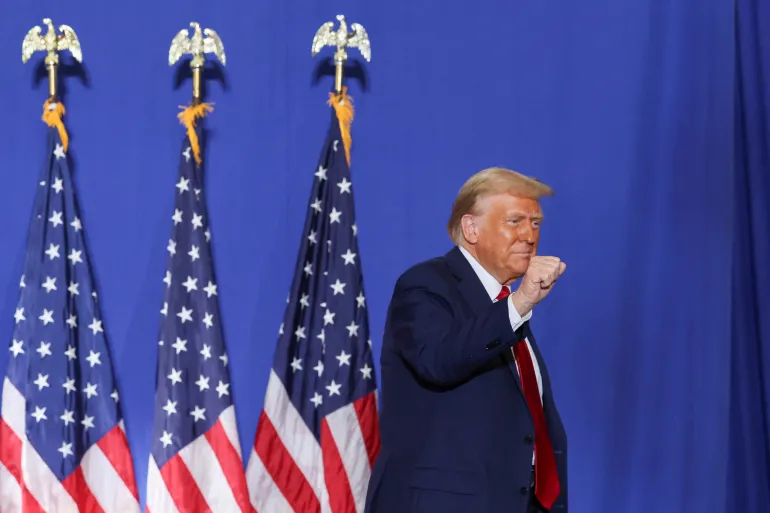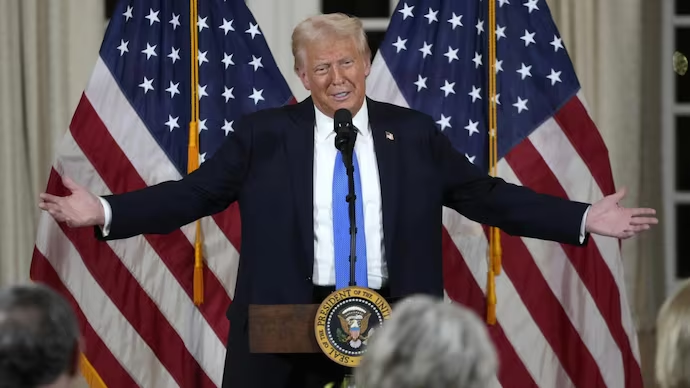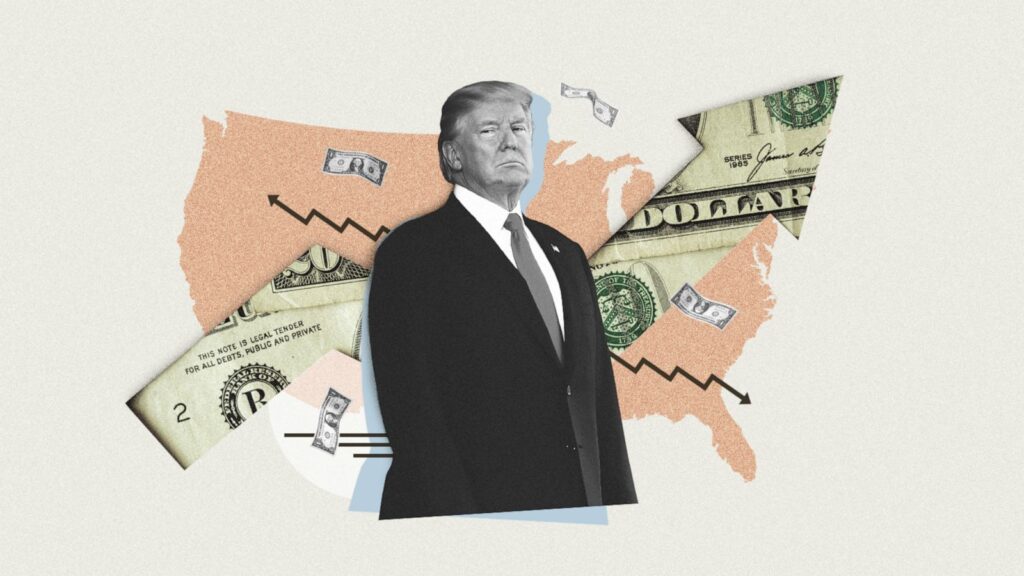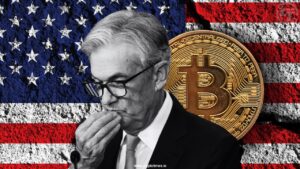Donald Trump Policies: An In-Depth Analysis

Donald Trump Policies
Introduction of Donald Trump Policies

The political landscape of America has evolved over the last decade, and one of the individuals who have played a gargantuan role in shaping the landscape is Donald J. Trump. As the 45th President of the United States, Donald Trump policies introduced a series of domestic and international policies that sparked global debate and sharply divided political analysts. Whether he is referred to as maverick president or a prickly populist, Trump’s presidency has been characterized by incredible, and mostly polarizing, measures.
Policies of Donald Trump are the focus of this blog in some way, encompassing significant sectors like the economy, immigration, healthcare, trade, climate, foreign policy, etc.
1. Economic Policies
Among Donald Trump’s policies, one of its foundations was economic nationalism. Under his regime, deregulation, tax cutting, and protectionism in trade, which was believed to energize America’s economy as well as create employment opportunities, was promoted.
Main Points:
• Masterpiece of legislation was Tax Cuts and Jobs Act 2017, reducing rate of company tax from 35% to 21%.
• Trump emphasized revitalizing American industry by urging corporations to reinvest domestically and repatriate overseas profits to boost the U.S. economy.
• Total repeal of the Obama regime rules that had been brought, especially in the oil and banking sectors, to ease the burden on business.
The Trump administration boasted of these economic policies contributing to record-level unemployment and GDP growth until the COVID-19 pandemic ruined the world economy.

2. Immigration Policies
Few topics defined Donald Trump policies as neatly as immigration. From the wall to travel bans, Trump’s immigration policy drew heated controversies.
Major Actions:
• Implementation of the “zero-tolerance” policy on the southern border, causing family separations.
• Ban on travel to numerous Muslim-majority nations, popularly known as the “Muslim Ban.”
• The Trump administration sought to end the Deferred Action for Childhood Arrivals (DACA) program, but its efforts were ultimately halted by court rulings that upheld the program’s protections.
• Partially wall construction and funding on the Mexican border, the most prominent of the campaign’s promises.
Donald Trump’s immigration policy took a hardline approach, drawing both enthusiastic support from his base and sharp criticism from opponents.
3.Trade Policies
Trump made America more protectionist on international trade.
Significant Initiatives:
• Pullout from the Trans-Pacific Partnership (TPP), a reversal of the United States’s stance on multilateral trade deals.
• The Trump administration renegotiated NAFTA, leading to the creation of the United States-Mexico-Canada Agreement (USMCA), which replaced the original trade pact with updated terms.
• China tariffs, opening a trade war that disrupted global supply chains and American agriculture.
Donald Trump trade policies to lower the U.S. trade deficit and raise American manufacturing. Critics contend, however, those actions strained international relations and hurt American farmers.
4. Healthcare Policies
Donald Trump’s health care policies primarily focused on repealing the Affordable Care Act (ACA), or Obamacare.

Main Points:
• Trump promised to “repeal and replace” Obamacare but did not succeed in passing health care bills within his administration.
• The 2017 tax reform effectively dismantled a key component of the Affordable Care Act by eliminating the financial penalty for not having health insurance, significantly weakening the law’s enforcement mechanism.
• Short-term health plan expansion and association health plan expansion that did not require ACA compliance.
Trump had promised cheaper, quality care as well, but what Americans cared most about was there being no real alternative plan.
5. Environmental and Climate Policies.
Climate change denial resonated with Donald Trump policies that were placing energy independence over environmental conservation.
Key Moves:
• Withdrawal from the Paris Climate Agreement in 2017 on the basis that it was in the American economy’s interest.
• Revocation of the Clean Power Plan, an Obama policy aimed at reducing carbon emissions.
• Signing contentious energy projects like the Keystone XL and Dakota Access pipelines.
Trump’s energy and environment policy aimed at bringing jobs to oil and gas companies, and the environmentalists viewed the moves as regressive and wiping out.
6. Defense and Foreign Policy
Donald Trump’s approach to foreign and defense policy was firmly rooted in the principle of prioritizing American interests above all else.
Strategic Steps:
• Meetings with North Korea’s Kim Jong-un in historic summits, though tangible results were few.
• Trump’s decision to pull U.S. troops out of Syria and Afghanistan ignited global debate, raising concerns about America’s reliability as a long-term security partner.
• Excluding Iran, encompassing support to Israel, such as moving the U.S. embassy to Jerusalem.
• Step up NATO allies’ contributions by prompting allies to make good defense expenditure commitments.
Trump’s overall foreign policy was to limit American activity abroad and redefine alliances based on a feeling of equity and contribution.
7. Judicial Appointments
Donald Trump policies leave their longest-lasting legacy in how they defined the federal judiciary.
Significant Appointments:
• Trump appointed three justices to the U.S. Supreme Court Neil Gorsuch, Brett Kavanaugh, and Amy Coney Barrett cementing a conservative majority.
• Additionally, his administration oversaw the confirmation of over 230 federal judges, significantly shifting the federal judiciary toward conservative jurisprudence.
Appointees have established permanent imprints on legal interpretations in the space of abortion, gun rights, and executive power.
8. COVID-19 Response
The Trump administration’s approach to managing the COVID-19 pandemic drew widespread scrutiny and became one of the most debated aspects of Donald Trump policies.

Actions Taken:
• Operation Warp Speed was designed to speed up vaccine development.
• In early 2020, the Trump administration implemented travel restrictions targeting China and several European countries in an effort to contain the spread of COVID-19.
• Pushing against mandates for face masks and confusing messages about public health regulations.
Critics blame Trump for minimizing the virus and politicizing public health as the reason for America’s high death rate. Supporters attribute him with accelerating vaccine distributions.
9. Education Policies
Donald Trump policies were directed towards decentralization and school choice.
Key Points:
• Increased emphasis on charter schools and private school vouchers.
• Reduced role of the federal government in K-12 education.
• The Trump administration reversed federal guidelines issued during the Obama era that had supported the rights of transgender students to use bathrooms aligning with their gender identity.
Education Secretary Betsy DeVos was at the forefront of these efforts, advocating for parental choice and school innovation.
10. Technology and Censorship
Donald Trump policies centered on regulating Big Tech and fighting censorship.
Efforts and Issues:
• Executive Order against Section 230, trying to hold social media companies responsible for moderation of content.
• Accusations of anti-conservative censorship on Twitter and Facebook.
• Efforts to ban Chinese apps such as TikTok and WeChat on national security grounds.
These policies also reflect Trump’s general agenda of pushing back against perceived bias and promoting America’s digital sovereignty.
11. Criminal Justice and Law Enforcement
Donald Trump Polices criminal justice and law enforcement policies were law-and-order focused, resonating with his base across the board.

Actions:
• Signed the First Step Act in 2018, a bipartisan criminal justice reform bill that lowers mandatory minimums on some nonviolent crimes.
• Strong backing for law enforcement throughout the George Floyd protests, consistently denouncing protest movements such as Black Lives Matter.
• Sending federal troops in to suppress mayhem in cities such as Portland and Washington, D.C.
Although the First Step Act received bipartisan support for advancing criminal justice reform, Trump’s handling of nationwide protests drew sharp criticism from many corners of the public and political spectrum.
12. Veterans and Military
Trump’s administration worked toward reshaping the Department of Veterans Affairs (VA) and increasing benefits for members of the military.
Notable Steps:
• The VA MISSION Act broadened veterans’ access to healthcare by allowing more opportunities to receive treatment from private medical providers outside the traditional VA system.
• Increases in military funding and troops.
• Space Force as sixth branch of U.S. Armed Forces established.
Donald Trump’s policies were a reflection of his dedication to building up the military as well as repairing long-existing shortcomings in the treatment of veterans.
13. Election Integrity and Voting Laws
Donald Trump’s election policies were subjected to strong criticism, particularly in 2020, as the presidential election was underway.
Key Events
• Repeated accusations of mass voter fraud, even in the absence of concrete evidence.
• Lawsuits in swing states, the majority of which were rejected by the courts.
• Advocated for tighter voter identification requirements while expressing strong opposition to expanded mail-in ballot initiatives.
All these policies and actions fostered controversy regarding democratic principles and the future of America’s electoral integrity.
14. Media and Communication
Trump’s feud with the media dominated public discussion and opinion.
Media Strategy:
• Politicizing the use of the term “fake news” to taunt unfavorable coverage.
• Aggravated use of Twitter as an uncensored forum until he was indefinitely suspended in January 2021.
• BULLYING the media and stripping credentials from journalists he considered biased.
Donald Trump’s approach to media transparency was often eclipsed by his combative interactions with journalists and his unprecedented reliance on social media to communicate directly with the public.
15. Economic Recovery and Infrastructure
Trump in his next presidency introduced economic recovery and infrastructure development proposals.

Key Proposals:
• America’s Infrastructure First agenda, although there was never a broad bill enacted into law.
• Economic stimulus measures during the COVID-19 pandemic, such as direct payments to Americans and loans to small businesses.
• Deregulation necessities and fossil fuel project investments as tools of recovery.
Some of those plans still lingered in Congress, but Donald Trump recovery policies set the agendas for the future.
Conclusion: Legacy of Donald Trump Policies
Donald Trump policies touched on a broad range of subjects and were typified by a clear mix of nationalism, deregulation, and authoritarian leadership. While his base sees them as bold and revolutionary, critics hold that they tended to have short-term benefits at the expense of long-term stability.
Party politics set aside, nobody can dispute that Donald Trump policies made their imprint felt on the landscape of American politics. In the courts, in the economy, in immigration and foreign policy, Trump’s years wrote the playbook on governing and will in the years to come continue to shape debate.
With speculation of a possible return to political life in 2024 and the future constant, an analysis of Donald Trump policies allows us to better understand the challenges and opportunities American democracy will encounter in the future.




